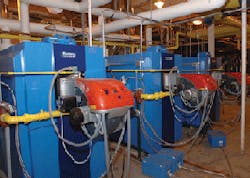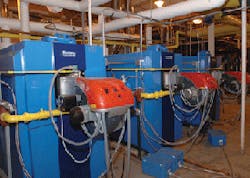5 Success Stories in Energy Management:
Andrews Air Force Base
The U.S. Air Force, according to its mission, is an “organization that measures success by its impact on the world, our country, and the lives of the men and women who hear the call and join [its] ranks.” For the energy team at Andrews Air Force Base in Maryland, reducing the base’s environmental impact and providing better quality of life for building occupants via energy management is part of this mission.
“It’s in the best interests of all of us to try [to] preserve the natural resources we have here by conserving energy, as well as try to establish a better place for the future,” says Matthew Capano, engineering technician, Andrews Air Force Base.
Through a series of energy-efficiency improvements, FY2005 water and energy conservation resulted in savings of nearly $4 million in utility costs. The energy team at Andrews Air Force Base has worked hard to achieve the goals set forth in Executive Order 13123 - Greening the Government Through Efficient Energy Management (June 1999). According to Section 202 of the order, “through life-cycle cost-effective measures, each agency shall reduce energy consumption per gross square foot of its facilities ... by 30 percent by 2005 and 35 percent by 2010 relative to 1985.”
Energy management has been a priority since 1985, but in 2002 (with the signing of a utility energy service contract [UESC]), the volume of projects grew significantly. With a UESC, the utility company finances energy-efficiency projects and is paid back based upon the resultant energy savings. Upgrading to more-efficient lighting and HVAC systems was the first order of business.
In investigating the products and systems on the market, the energy team paid careful attention to not only manufacturers’ promises of efficiency levels, but also closely considered the amount of maintenance required. Capano explains: “Some of the systems we found to be good, but they had pretty high maintenance associated with them. We really tried to find high-efficiency [equipment] with low maintenance costs.” The team also recognized that controlling the equipment through a building-automation system would reduce runtime, increase life-cycle, and lighten the amount of maintenance needed.
Andrews Air Force Base is currently on target to comply with the mandates of Executive Order 13123. “When we finished up 2006 in comparison to the new baseline, we were at a 41-percent reduction - already at [our] goal,” explains George Lopez, energy manager, Andrews Air Force Base.

